Sci-fi fandoms may be less obviously attuned to the tarot than their fantasy counterparts, but this seeming disconnect between magic and technology yields many entertaining surprises and synchronicities.
The tarot traditionally comprises 78 cards total, with 22 major arcana and 56 minor arcana. The major arcana use archetypal images to represent important events and lessons, following a metaphorical path through life’s mysteries known as “the Fool’s journey.” The minor arcana are suited cards that concern themselves more with daily life and mundane situations.
In these decks, the traditional suits of wands, cups, swords, and pentacles (or coins) are often substituted with in-universe objects from the fandom, such as “synths” instead of “pentacles” in the Fallout deck, or “dice” instead of “swords” in the Stranger Things deck. Most include accompanying guidebooks, many of which introduce original spreads—specific layouts of the cards, in which each card placement offers a particular answer or insight.
One can only hope that, someday, there will be a Star Wars tarot.
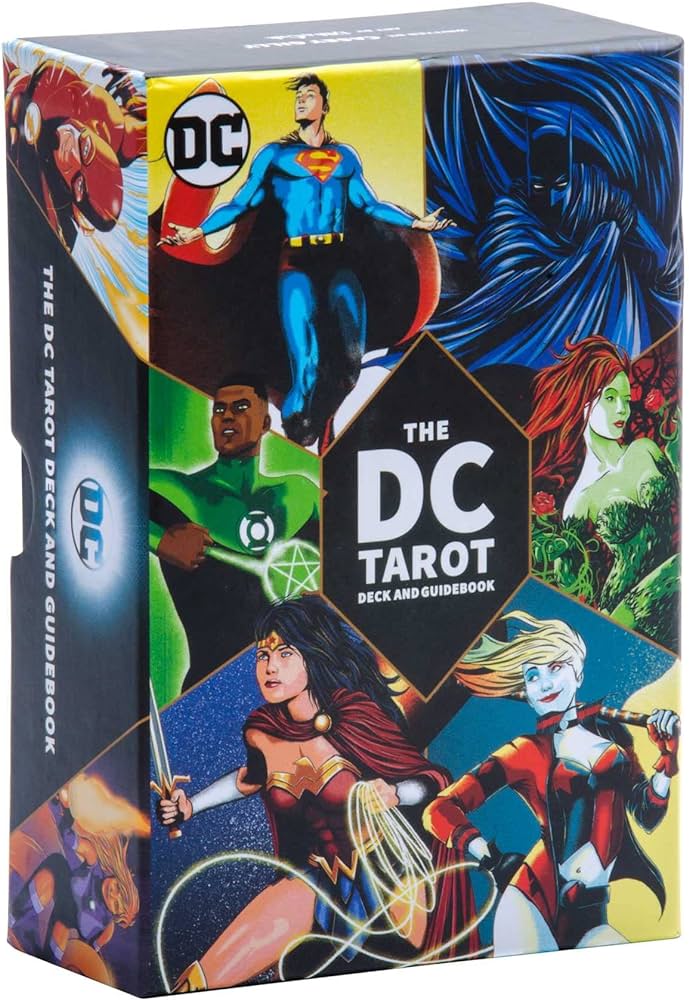
The DC Tarot Deck and Guidebook
The DC Comics tarot deck has some spot-on categorizations. Interpretations of the Empress card, for example, include connections to nature, motherhood, and femininity. Who better to personify that archetype than Poison Ivy, a representation of Mother Nature herself? Harley Quinn, meanwhile, portrays the Fool—a card symbolizing freedom and spontaneity, or, in its reversed state, recklessness and risky behavior. These are two examples of many that will be a treat for DC fans and tarot enthusiasts alike.
The suits retain their traditional names.
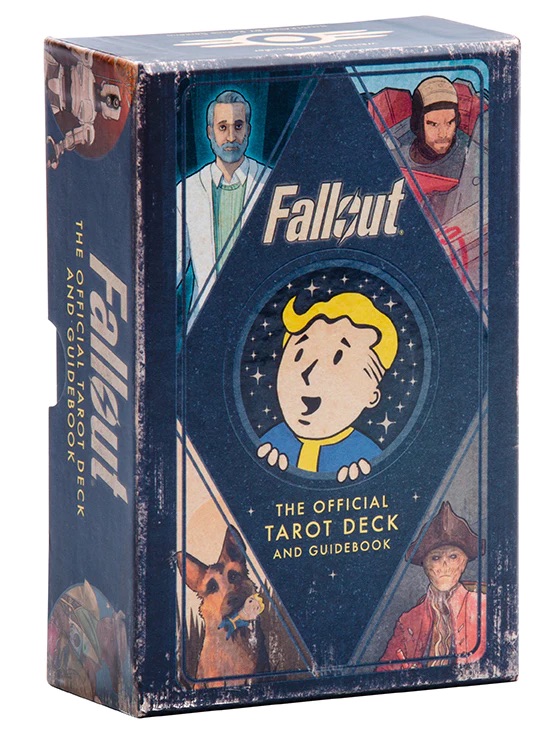
Fallout: The Official Tarot Deck and Guidebook
Bethesda’s franchise of Fallout games gets more esoteric than a setting like “post-nuclear apocalyptic wasteland” might suggest. Both the cards and the guidebook are designed to look beaten around the edges, as if recently unearthed from a long-abandoned Vault. A fan-favorite German shepherd, Dogmeat, appears as the Sun, epitomizing joy, positivity, and success. Where the classic illustration shows a child riding a horse, Fallout’s Sun shows Dogmeat with a Vault Boy chew toy in his mouth. “Just as Dogmeat is a source of unending happiness and love to the Sole Survivor, so too have you found a brighter sun,” Schafer writes. A glimmer of optimism in a nuclear wasteland.
Wands are “Muskets,” Cups are “Lanterns,” Swords are “Steel,” and Pentacles are “Synths.”
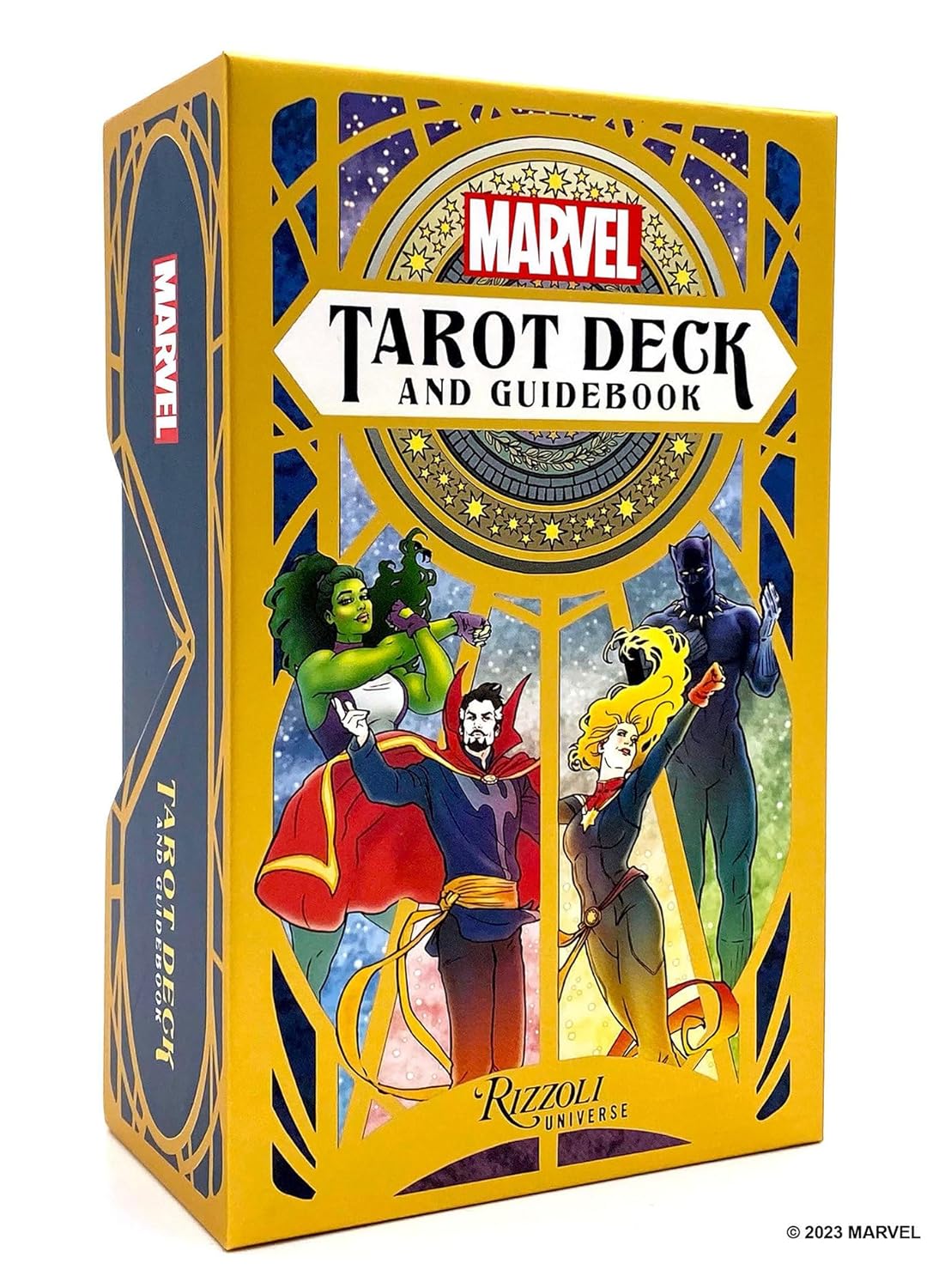
Marvel Tarot Deck and Guide Book
These Marvel Comics character choices are well-curated: Dr. Strange is the Magician; Professor X is the Hierophant; She-Hulk is Strength; Black Panther is Judgement. Inspired by the Art Nouveau style, illustrator Lily McDonnell depicts these heroes and villains in a decorative manner, with ornate “halos” surrounding them. McDonnell has said that “I made notes of the meaning and visual elements from each of the traditional Rider-Waite cards. Wherever possible I posed the character with the same gestures.”
The suits retain their traditional names.

Star Trek: The Original Series Tarot
There are exactly 78 originally-aired episodes of Star Trek: The Original Series, as there are exactly seventy-eight tarot cards. Telekiad’s deck matches each episode one-to-one with a tarot card, including a truly incredible level of detail both in terms of Star Trek fandom and arcane knowledge. The deck also includes two bonus cards representing Star Trek’s initially unaired pilot film.
Each card contains a wealth of symbols indicating its traditional elemental, gender, directional, and astrological associations. Suited cards include symbols indicating the card’s link to the Hermetic Kabbalah’s Tree of Life and its accompanying Hebrew letter—and this only touches on the esoteric detail of the cards. The attention paid to Star Trek episode data is equally precise, with each card including the depicted episode’s title, filmed order number (which differs from production code number), Stardate number (if any), and the first airdate number, given in the format of a Stardate number. The 128-page guidebook (Card Trek) by Mark “Adam” Baum contains several chapters of tarot history from its origins up to the 1940s, a full chapter on example spreads, and appendices of cards and symbols.
Wands are “Rods” and Swords are “Blades”; Cups and Coins retain their traditional names.
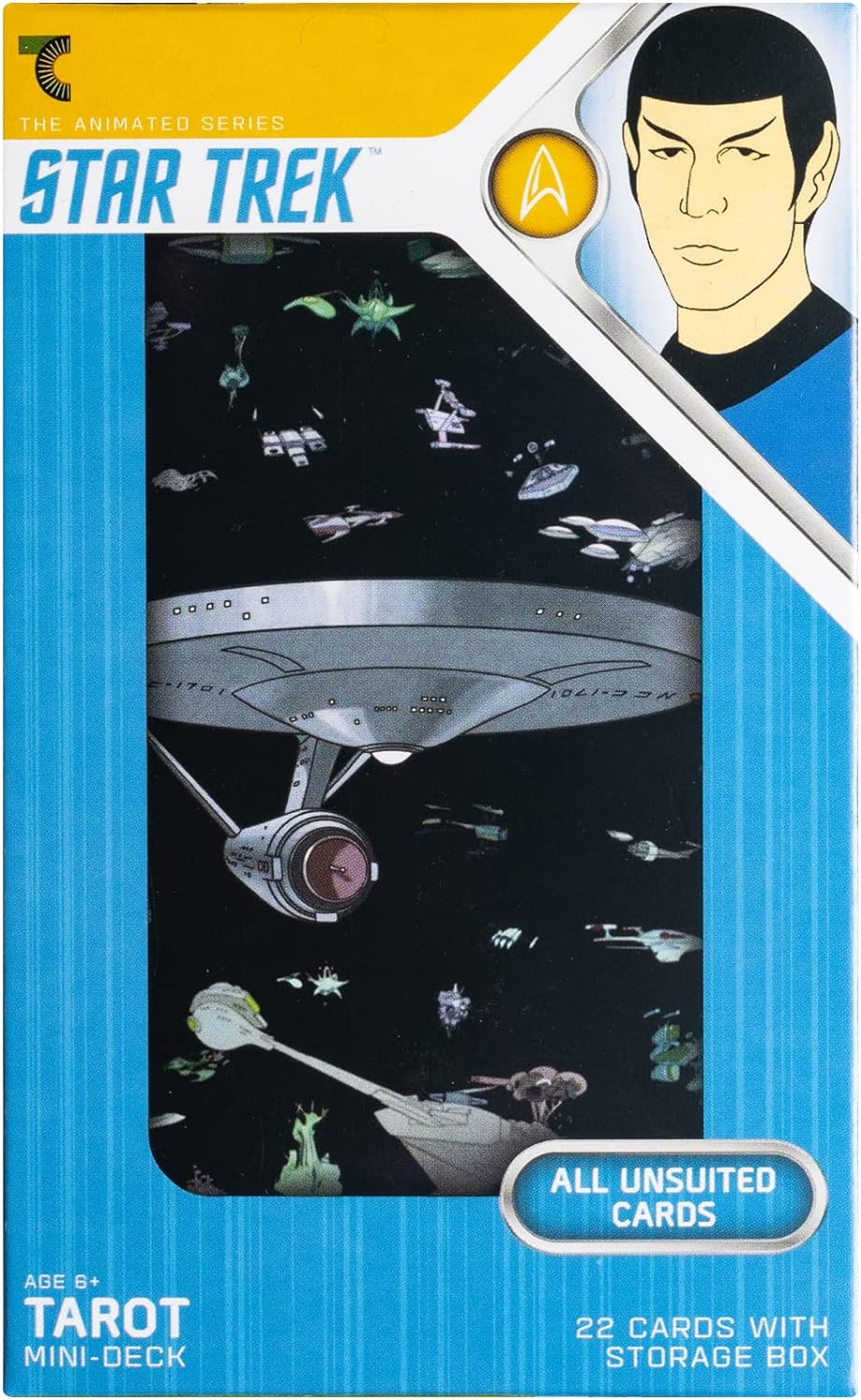
Star Trek: The Animated Series Tarot Mini-Deck
This twenty-two-card deck, consisting of only the Major Arcana, is designed to be mixed and matched with Telekiad’s Star Trek: Original Series tarot, and potentially with future Telekiad Star Trek decks. This deck matches every originally aired episode of Star Trek: The Animated Series with one Major Arcana card.
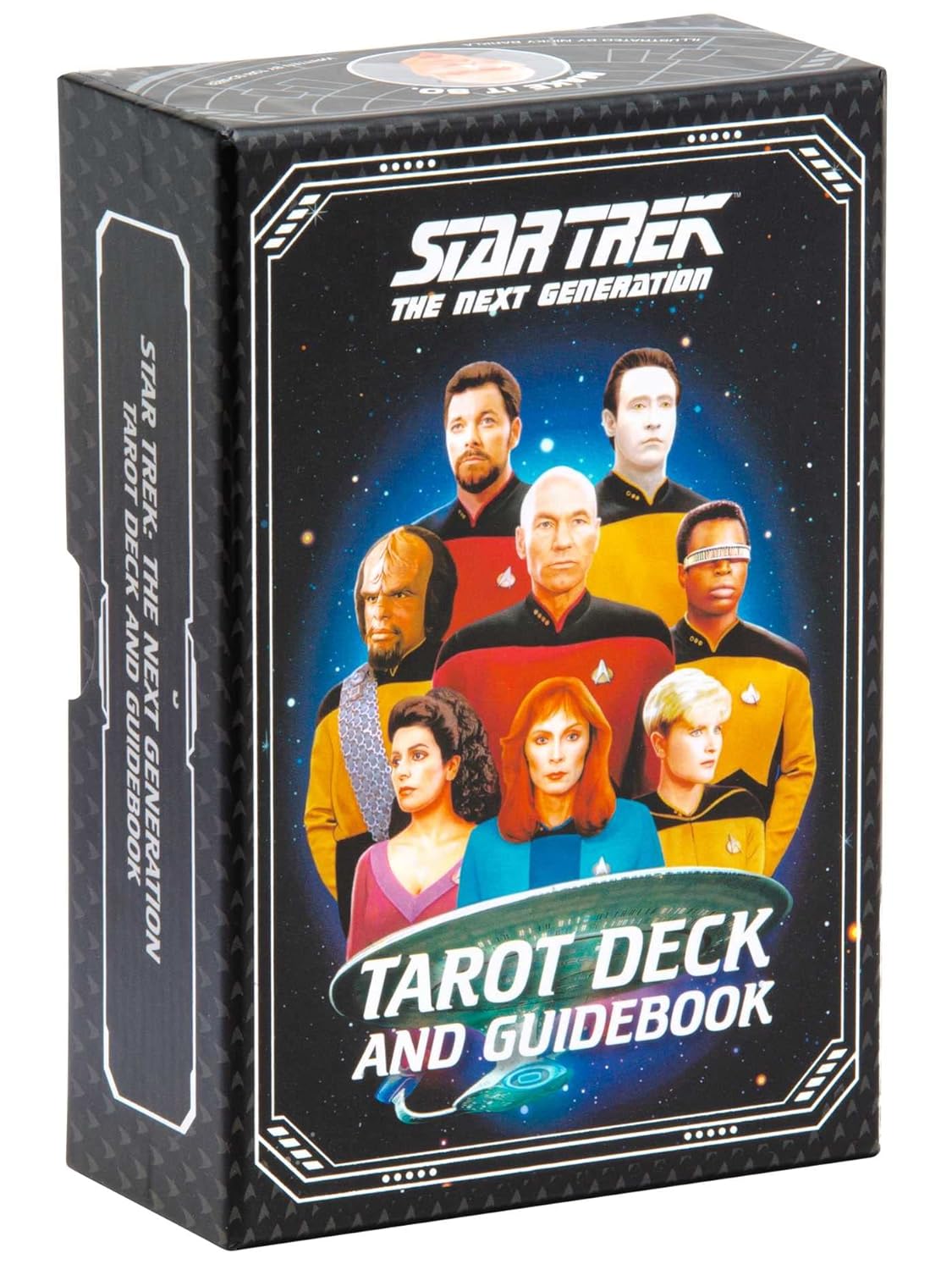
Star Trek: The Next Generation Tarot Deck and Guidebook
Rather than matching the tarot archetypes to episodes, Insight’s Next Generation deck matches the archetypes to characters. Geordi La Forge is the Magician (“committed to learning as much as he can to elevate himself”); empath Deanna Troi is the intuitive High Priestess; chief security officer Worf is Strength; and the U.S.S. Enterprise is, of course, the Chariot.
Wands are “Cloaks,” Cups are “Starships,” Swords are “Bat’leths,” and Pentacles are “Latinum.”

Stranger Things Tarot Deck and Guidebook
Characters and scenes from the show are illustrated in an appropriately eerie ’80s color palette, with characters often seeming to make intense eye contact with the querent. One standout is Eddie Munson as the Hanged Man, a card typically representing surrender, sacrifice, and/or contemplation. Metalhead Eddie floats in a lightning-scattered red sky with his guitar, while the text invites the querent to “reflect on everything that has brought you to this moment, and let go of your least metal thoughts.”
Wands are “Strands,” Cups are “Spokes,” Swords are “Dice,” and Pentacles are “Scoops.”








